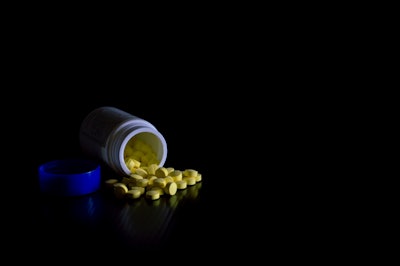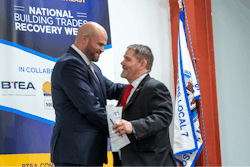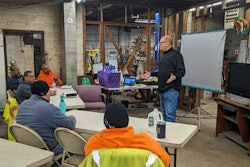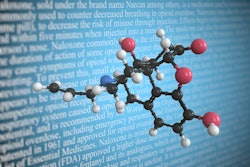
One of the easiest and most effective ways to protect your workers and their families from addiction or the misuse of prescription drugs is to assist them in destroying unused medications that remain in their homes. According to the Centers for Disease Control, nearly 92% of all post-surgical opioid prescriptions go unused and remain available in a home for misuse, abuse or even diversion from someone who was not originally prescribed the medication.
Editor's Note: National Prescription Drug Take Back Day allows anyone to safely and anonymously dispose of unneeded medications. The next event is scheduled for April 27. The date may differ depending on your location.
Scope & Source of the Leftover Opioid Pain Medication Problem
Brand Newland, Co-founder and CEO of Goldfinch Health confirms the CDC findings, stating “more than 1 billion opioids remain unused after surgery each year in the U.S. Three out of four post-surgery patients fill an opioid prescription, with an average prescription size of 44 pills.” Compounding the number of pills per prescription, Newland highlights “a recent study from Michigan found patients use 27% of the pills they are prescribed. The result is an incredible number of leftover pills sitting in medicine cabinets in our neighborhoods across America.”
 Three out of four post-surgery patients fill an opioid prescription, with an average prescription size of 44 pills.@steheap - adobe.stock.com
Three out of four post-surgery patients fill an opioid prescription, with an average prescription size of 44 pills.@steheap - adobe.stock.com
The core business of Goldfinch Health is to optimize surgical outcomes using opioid-sparing Enhanced Recovery Around Surgery protocols. Goldfinch Health includes a sample of a drug deactivation product for at-home disposal in the company’s Prepared for Surgery Kit provided to patients with upcoming surgeries. Newland highlights why this is core to his company’s mission:
"Getting rid of those leftover pills introduces complexity into our lives. That’s why, far too often, safe disposal doesn’t happen. We need an 'easy button' — a product that deactivates leftover opioids and makes them safe for disposal in household garbage. Thankfully, patients have several options."
Proof Points on the Danger of Leftover Opioid Pain Medications in Our Homes
A recent study in the Journal of the American Medical Association (July 2022) concluded that there is a 60% greater chance of an overdose by a nonprescribed member of a household where an opioid has been prescribed to another member of that household. The risk of household risk increased by 625% for the second and subsequent opioid prescription. This beckons a call to action for at-home drug deactivation and disposal.
RELATED:
- Opioids & Overdose Deaths In The Construction Industry: A Call to Action
- Forming the Alliance for Naloxone Safety In The Workplace
- Recovery Week: Breaking Down Stigma & Creating Hope
- Construction Leaders Recognizing & Responding to the Opioid Crisis
Sadly, the most likely victims of these medications are our children. Every year, over 1,500 children misuse opioids that have not been prescribed to them. Teenagers report that the number one source for prescription drugs is their parents’ medicine cabinet because the drugs are readily available.
 A recent study in the Journal of the American Medical Association (July 2022) concluded that there is a 60% greater chance of an overdose by a nonprescribed member of a household where an opioid has been prescribed to another member of that household.@KMPZZZ - adobe.stock.com
A recent study in the Journal of the American Medical Association (July 2022) concluded that there is a 60% greater chance of an overdose by a nonprescribed member of a household where an opioid has been prescribed to another member of that household.@KMPZZZ - adobe.stock.com
Whether the excess medications are used by children or adults, their existence in the household remains a huge threat. Last year, our country averaged over 300 people fatally overdosing per day. The national average for fatal overdoses is approximately 22 people for every 100,000. This is even worse in the construction industry. According to the Centers for Disease Control, in the construction and extraction industry group, the fatal overdose numbers rise from 22 to 162.9 people for every 100,000. So, eliminating unused medications should be a top priority and your employees should know that this is important to you as an employer.
Why At Home Drug Deactivation & Disposal is the Recommended Solution
Most current methods to dispose of unused medication are either not used, ineffective or unsafe to the environment. However, many simple and inexpensive products currently exist that can destroy medications in your home and allow them to be safely placed into your home garbage. Several years ago, SAFE Project distributed over 100,000 drug deactivation pouches produced by Deterra.
Since that time, more work has been done and other mission-oriented companies have fully committed to providing products that not only mitigate the risk of nonmedical use and overdoses from prescription medications by rendering them unusable, but they are also providing products that are non-toxic and non-hazardous. Their products take a deadly risk of leftover medications and create a disposal product that is safe to others, reduces drug exposure to the environment, and acts as a deterrent for misuse.
 Most current methods to dispose of unused medication are either not used, ineffective or unsafe to the environment.@PurpleHousePhotos - adobe.stock.com
Most current methods to dispose of unused medication are either not used, ineffective or unsafe to the environment.@PurpleHousePhotos - adobe.stock.com
These additional companies are DisposeRx, Rx Destroyer and NarcX. Each of their products is unique and can be used for distinct types of situations:
- DisposeRx’s product is best distributed when an individual prescription is filled, which is called co-dispensing. The product consists of a powder that can be placed inside the original bottle of the prescribed medications. Once water is added to the bottle, the remaining medication will start breaking down and the entire bottle can be safely discarded in your garbage.
- Rx Destroyer and NarcX have products that can dispose of larger quantities of medications. These products will effectively assist families destroy leftover medications that have been piling up inside the household – rather than at the time of an individual prescription. Each of these products has their unique elements with their products being distributed in larger quantities for hospitals, pharmacies, and law enforcement take-back programs, as well as for smaller amounts at individual homes.
The risk of leftover opioid pain medications is real with safety implications for every family that currently has leftover opioids (and other harmful medications) in their homes.
 Drug deactivation and at-home disposal can significantly and immediately reduce the risk of leftover opioids in YOUR home.@Megan - adobe.stock.com
Drug deactivation and at-home disposal can significantly and immediately reduce the risk of leftover opioids in YOUR home.@Megan - adobe.stock.com
Drug deactivation and at-home disposal can significantly and immediately reduce the risk of leftover opioids in YOUR home.
The call to action is urgent! Please take heed of this warning and protect your family and guests in your home from the risk of leftover prescription opioids. Now is the time to act! Please be safe and not sorry!
Additional information on each of the products is available at the websites for each company or by contacting Cal Beyer at SAFE Project through [email protected].



















